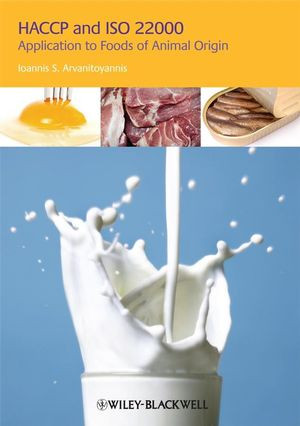

Most ebook files are in PDF format, so you can easily read them using various software such as Foxit Reader or directly on the Google Chrome browser.
Some ebook files are released by publishers in other formats such as .awz, .mobi, .epub, .fb2, etc. You may need to install specific software to read these formats on mobile/PC, such as Calibre.
Please read the tutorial at this link: https://ebookbell.com/faq
We offer FREE conversion to the popular formats you request; however, this may take some time. Therefore, right after payment, please email us, and we will try to provide the service as quickly as possible.
For some exceptional file formats or broken links (if any), please refrain from opening any disputes. Instead, email us first, and we will try to assist within a maximum of 6 hours.
EbookBell Team

0.0
0 reviewsThis book presents and compares the HACCP and ISO 22000:2005 food safety management systems. These systems were introduced to improve and build upon existing systems in an attempt to address the kinds of failures which can lead to food crises. Numerous practical examples illustrating the application of ISO 22000 to the manufacture of food products of animal origin are presented in this extensively-referenced volume. After an opening chapter which introduces ISO 22000 and compares it with the well-established HACCP food safety management system, a summary of international legislation relating to safety in foods of animal origin is presented. The main part of the book is divided into chapters which are devoted to the principle groups of animal-derived food products: dairy, meat, poultry, eggs and seafood. Chapters are also included on catering and likely future directions.
The book is aimed at food industry managers and consultants; government officials responsible for food safety monitoring; researchers and advanced students interested in food safety.Content:
Chapter 1 HACCP and ISO 22000 – A Comparison of the Two Systems (pages 1–45): Ioannis S. Arvanitoyannis and Aikaterini Kassaveti
Chapter 2 A Summary of EU, US and Canadian Legislation Relating to Safety in Foods of Animal Origin (pages 46–88): Ioannis S. Arvanitoyannis and Persefoni Tserkezou
Chapter 3 Dairy Foods (pages 89–180): Ioannis S. Arvanitoyannis, Theodoros H. Varzakas and Maria Koukaliaroglou?Van Houwelingen
Chapter 4 Meat and Meat Products (pages 181–276): Ioannis S. Arvanitoyannis, Theodoros H. Varzakas and Persefoni Tserkezou
Chapter 5 Poultry (pages 277–308): Ioannis S. Arvanitoyannis and Theodoros H. Varzakas
Chapter 6 Eggs (pages 309–359): Ioannis S. Arvanitoyannis, Theodoros H. Varzakas, Konstantina Tzifa and Demetrios Papadopoulos
Chapter 7 Seafood (pages 360–452): Ioannis S. Arvanitoyannis and Theodoros H. Varzakas
Chapter 8 Catering (pages 453–529): Ioannis S. Arvanitoyannis and Theodoros H. Varzakas
Chapter 9 Conclusions and Future Directions (pages 530–538): Ioannis S. Arvanitoyannis